Sales enablement has become a key strategic component for B2B medium and large enterprises looking to drive growth and gain a competitive edge. Achieving your sales enablement goals requires a skilled cross-functional team that can align with business objectives and successfully adopts sales enablement practices across the company.
But what essential skills will your sales and marketing team need in order to achieve your set sales enablement goals?
In this post, we'll explore the seven essential skills your revenue team needs to excel and address common pain points and concerns. Let's dive in!
Table of Contents
- Strategic Thinking and Goal Alignment
- Collaboration
- Data-Driven Decision Making
- Content Creation and Messaging
- Technological Adaptability
- Sales Enablement Training and Onboarding Expertise
- Sales Enablement Leadership and Ownership
Essential Skills Your Team Needs To Achieve Your Sales Enablement Goals
To succeed in sales enablement requires more than just providing your sales team with the right tools and resources. It also requires developing the essential skills needed to use those tools to their fullest potential.
Here we explore seven key skills that your sales team needs to achieve your sales enablement goals and drive revenue growth.
1. Strategic Thinking and Goal Alignment
Embracing strategic thinking means diving into the big picture, syncing with your company's long-term vision, and making savvy decisions. This is essential to achieving your sales enablement objectives while leveraging both internal capabilities and external opportunities.
Imagine outshining competitors and hitting those revenue goals – it's possible with well-aligned sales and marketing teams. Start by nurturing proactive problem-solving skills and aligning goals to fuel business growth and success.
Inspire your team to fully grasp the company's vision, mission, and values, along with the market landscape and competition. Set crystal-clear, measurable sales enablement goals that directly back broader business objectives, like ramping up revenue, skyrocketing conversion rates, or speeding up sales cycles. Establish specific targets and timeframes, then share them with the whole team to ensure everyone's on the same page and can track progress together.
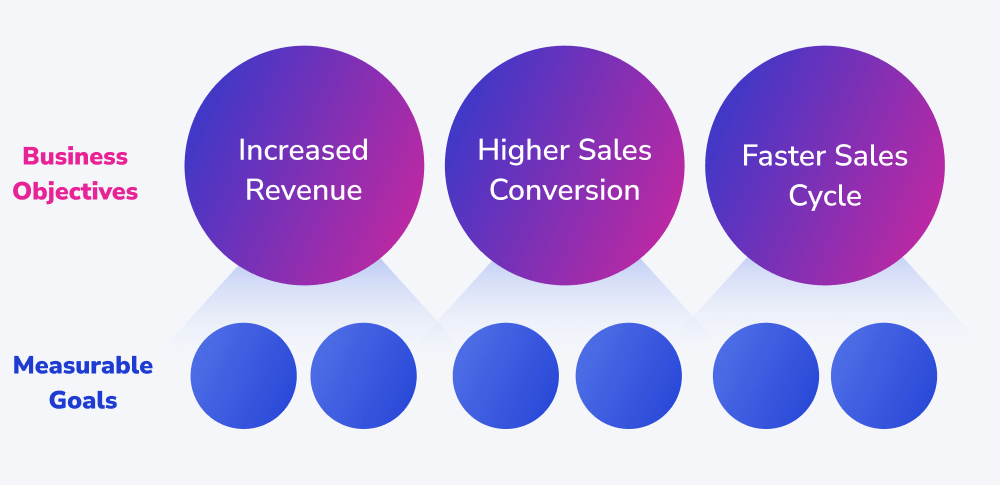
One tactical tip to help your sales team embrace strategic thinking is to introduce regular "strategy sessions" into their routine. During these sessions, encourage team members to step back from day-to-day tasks and focus on the big picture.
Keep an eye on progress using key performance indicators (KPIs), regularly reviewing and dissecting metrics to pinpoint areas to level up and fine-tune your sales enablement strategy as needed. Understanding the key KPIs for evaluating sales enablement impact ensures you're fine-tuning your strategy effectively. This dedicated time for strategic reflection will foster a mindset of forward-thinking and goal alignment, ultimately enhancing your team's performance.
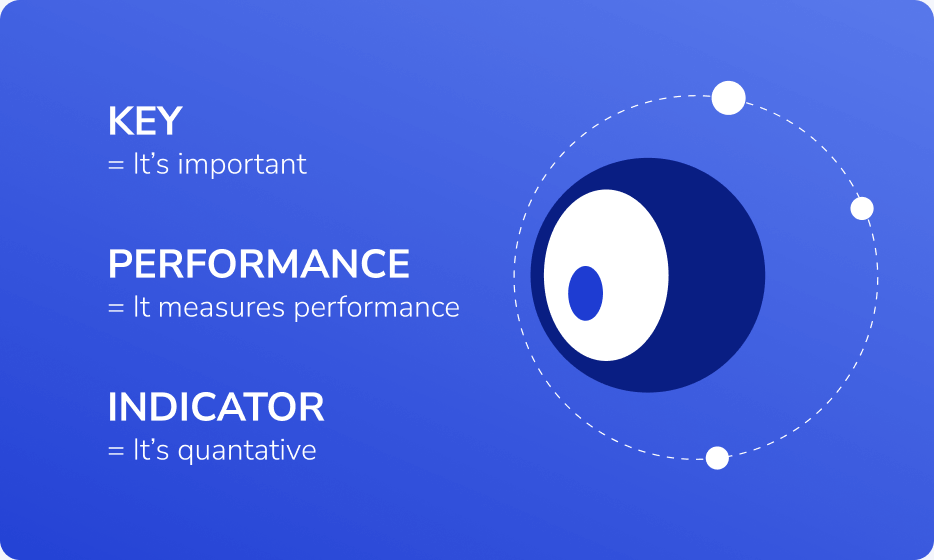
|
💡 Clear and effective communication becomes the compass that directs your team’s efforts, fuels motivation, and instills a shared sense of purpose, enabling your team to achieve your goals together. Read more about How to Successfully Communicate Sales Targets to Your Team → |
2. Collaboration
Achieving your sales enablement goals is not a one-man job. The key to your success comes from sparking cross-functional collaboration, shattering silos, and uniting your team toward a common goal. Aberdeen Group stated that companies with tight sales and marketing alignment can achieve a whopping 20% annual revenue growth, while those falling short face a 4% decline.
Embrace diverse perspectives to unearth fresh opportunities and expose hidden challenges that solo departments might overlook.
Ignite open communication and camaraderie among sales, marketing, customer success, and other departments through regular meetings, engaging sales training workshops, and joint training sessions. This keeps everyone in sync and focused on sales enablement goals.
This can also look like having your marketing and sales join forces to craft buyer personas and map the buyer's journey, pinpointing gaps in content, messaging, and processes to better cater to prospects and customers. Sales and customer success can unite to uncover upselling or cross-selling goldmines, elevating revenue and customer lifetime value.
💡Here’s a tip: Launch a "buddy system" that pairs members from different departments to join forces on projects, exchange insights, and delve into each other's roles related to your company's sales enablement efforts. This camaraderie sparks cross-functional collaboration, strengthens team bonds, and cultivates a shared responsibility culture for sales enablement objectives.
3. Data-Driven Decision Making
Data-driven decision-making is key to making well-informed decisions for stellar results. By analyzing data and using insights to shape strategy and next action points, your team can keep optimizing sales processes and assess revenue impact.
Learn more about Showell's Sales Content Analytics →
A study by McKinsey found that companies that use data-driven insights to inform their sales strategies can see a 5-6% increase in revenue. Begin by identifying the most relevant KPIs for your sales enablement initiatives. Some common KPIs include:
- Lead conversion rate: The percentage of leads that convert into customers
- Average deal size: The average revenue generated per closed deal
- Sales cycle length: The average time it takes to close a deal
- Win rate: The percentage of deals that result in a sale
- Quota attainment: The percentage of sales reps achieving their sales targets
Once you've nailed down the vital KPIs, create a system for collecting, analyzing, and reporting data and findings, by using sales enablement tools, CRM software, and analytics platforms.
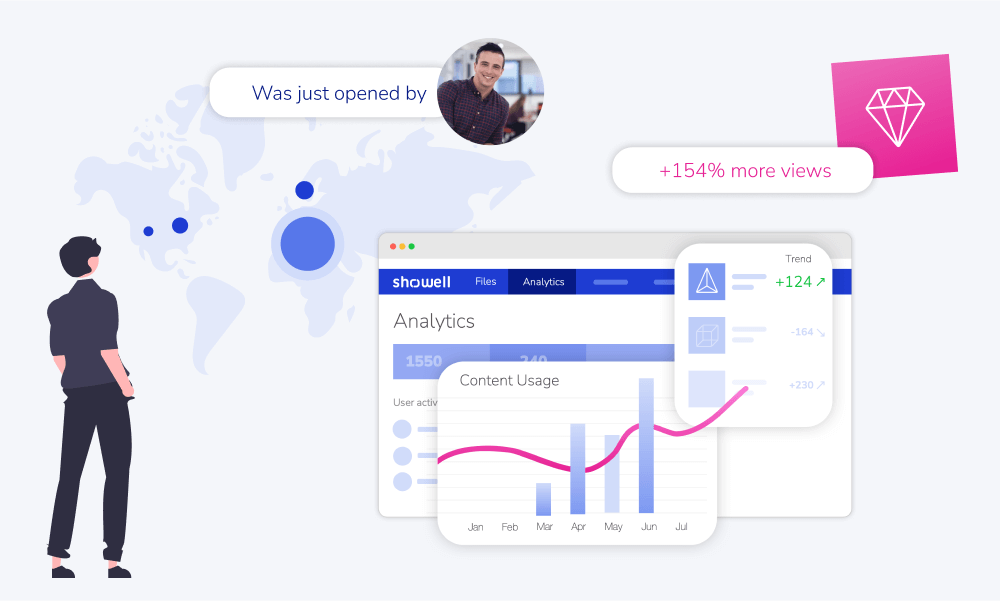
For example, your sales team is consistently struggling to meet quarterly revenue targets. After analyzing the data, you discover that the average deal size has been steadily decreasing over the past few quarters. By digging deeper into individual customer segments, you find that the sales team is focusing heavily on small and medium-sized businesses (SMBs), while larger enterprise deals are often left unattended.
Read more about All You Need To Know About Measuring Sales Content Performance →
The data-driven insights reveal an opportunity to shift your sales team's focus toward more lucrative, larger deals with enterprises.
Armed with this information, your sales enablement team develops a tailored sales playbook and training program specifically designed to equip your sales reps with the skills and knowledge needed to engage and close deals with enterprise clients.
In this scenario, data-driven decision-making helps identify an overlooked market segment and enables the sales enablement team to create targeted resources that ultimately lead to an increase in average deal size and improved revenue performance.
|
💡 Quantifying the success of sales enablement initiatives isn't just beneficial—it's crucial. Read more from our blog and learn How to Measure Sales Enablement? → |
4. Content Creation and Messaging
Mastering targeted internal and external content creation is vital to support your sales enablement goals. This involves crafting engaging, informative, and personalized messaging for prospects and customers, as well as developing resources and tools for the sales team.
Read more about: Learn 8 Rules of Tailoring Your Presentations →
By honing tailored content and messaging, your revenue team can significantly boost sales performance and customer relationships.
Data-driven tailored content offers numerous benefits, such as:
- Improved engagement: Personalized content, reflecting your audience's preferences, challenges, and behaviors, resonates with prospects and customers, leading to higher engagement rates and better sales results.
- Shorter sales cycles: Providing the right content at the right time helps prospects move through the sales funnel faster, addressing specific objections and easing deal closures.
- Increased customer retention: Personalized content strengthens relationships with existing customers, increasing satisfaction and loyalty, resulting in higher retention rates and greater lifetime value.
Picture this: A software company identifies a segment of its target market—small business owners in healthcare. Analyzing data on how they interact with your content, the marketing team develops industry-specific content, like case studies, whitepapers, and blog posts, showcasing the company's expertise in solving healthcare-related challenges. This targeted content builds credibility, leading to higher engagement rates and faster sales cycles.
5. Technological Adaptability
Improving your sales team's tech savviness is essential in today's digital landscape. As more sales processes become automated and digitized, your sales reps need to be comfortable using advanced tools and technologies to engage with prospects, close deals, and manage their tasks. Investing in training and support for your team can help them become more proficient with technology, leading to improved efficiency and better sales outcomes.
Plus, a tech-savvy sales team is better equipped to adapt to new tools and trends as they emerge, ensuring your organization stays competitive in the long run. By integrating sales enablement tools into your existing IT architecture, providing training to improve your team's tech skills, and encouraging adaptability to new technologies, you can drive better sales performance and stay ahead of the competition.
Read more about What is the Best Way to Provide Content to Your Sales Team? →
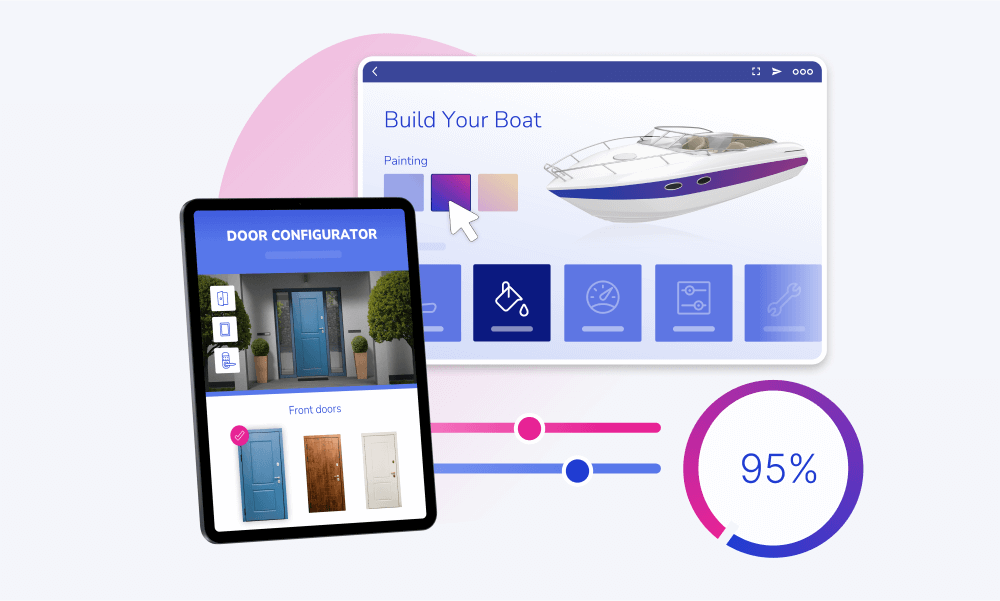
A seamless integration with various or existing tools ensures a smooth workflow for your sales team, reducing friction and allowing them to focus on their core tasks.
It also enables better data flow and sharing across different departments, promoting cross-functional collaboration and ensuring that everyone is working with the same, up-to-date information.
6. Sales Enablement Training and Onboarding Expertise
To align with your sales enablement objectives, develop onboarding programs for new hires and existing teams. This ensures new hires are effectively onboarded and receive the necessary training to get familiar with the tool and excel in their roles. Additionally, it's vital to encourage ongoing professional development and skill-building with your existing teams to foster a culture of continuous improvement.
Providing continuous training and feedback exchange is essential for several reasons:
- Adapting to market changes: The business landscape is constantly evolving, and your sales team must stay up-to-date with the latest trends, tools, and strategies to remain competitive. Continuous training helps your team adapt to market changes and effectively address new challenges and opportunities.
- Skill development: As your sales enablement strategy evolves, your team will need to acquire new skills and knowledge to execute it effectively. Ongoing training ensures your sales team stays ahead of the curve and can consistently deliver results.
- Employee engagement and retention: Providing continuous learning opportunities and feedback can boost employee engagement and satisfaction, leading to higher retention rates. When employees feel supported and see a path for growth, they are more likely to stay with the company and contribute to its success
Neglecting ongoing training and feedback exchange can lead your sellers to struggle with handling unexpected objections, and inability to adapt to new market trends and competitors, leading to declining sales performance. So be sure to provide continuous support, training, and feedback to your teams!
| 👉 Successful onboardings not only decreases time to productivity, but also improve sales performance in the long-term. Find out more from Mastering Sales Onboarding: The Key to Success in B2B Sales → |
7. Sales Enablement Leadership and Ownership
Developing sales enablement champions is a critical factor in the long-term success of your sales enablement initiatives.
They will act as role models, showcasing the benefits of sales enablement and inspiring others in your organization to adopt the necessary mindset and practices. They also serve as a valuable resource for your sales team, offering guidance, support, and expertise to help them excel in their roles.
Look for individuals who display a strong understanding of sales enablement principles, have a track record of success in their roles, and demonstrate a passion for driving organizational change. These individuals may come from various departments, including sales, marketing, customer success, or even product development.
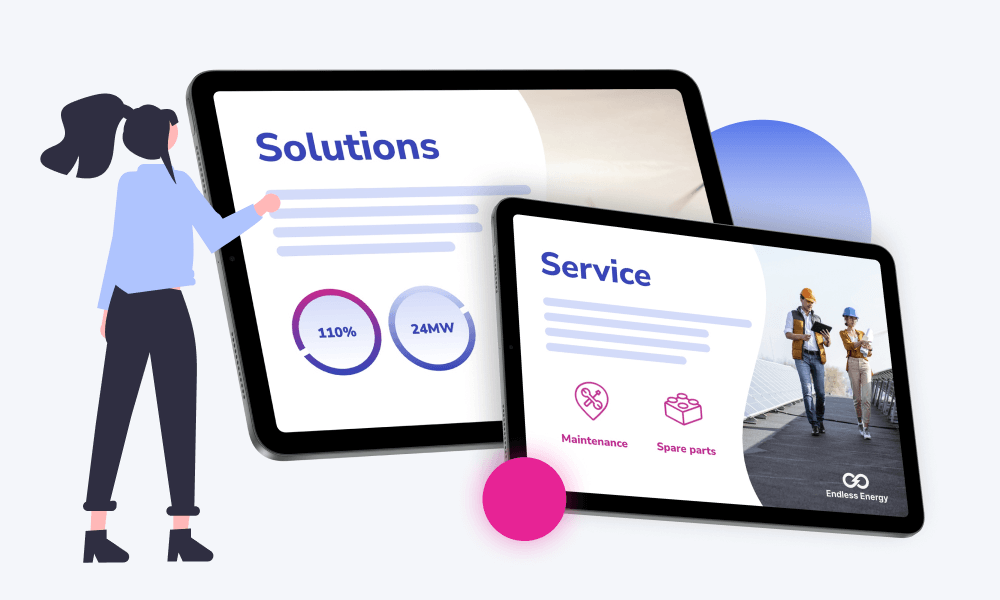
Next, equip potential champions with the necessary skills, knowledge, and resources to lead sales enablement initiatives within their respective teams. This may include training on best practices, access to tools and technologies, and ongoing support from sales enablement experts.
Foster a culture of collaboration by promoting cross-functional teamwork and regular communication among sales enablement champions. This will help create a shared vision and understanding of sales enablement objectives and ensures that initiatives are executed consistently across the organization.
In summary...
Developing these seven essential skills within your sales enablement team will empower your team to achieve sales enablement objectives and drive business growth. By investing in your team's skills and capabilities, you'll be better equipped to successfully implement sales enablement strategies and realize a strong return on investment.
Learn more about Sales Enablement:
Ready to take your sales enablement efforts to the next level? Spar with our sales enablement professionals to discover how we can help you achieve your goals. And don't forget to check out our other insightful blogs on sales enablement strategies and best practices!




